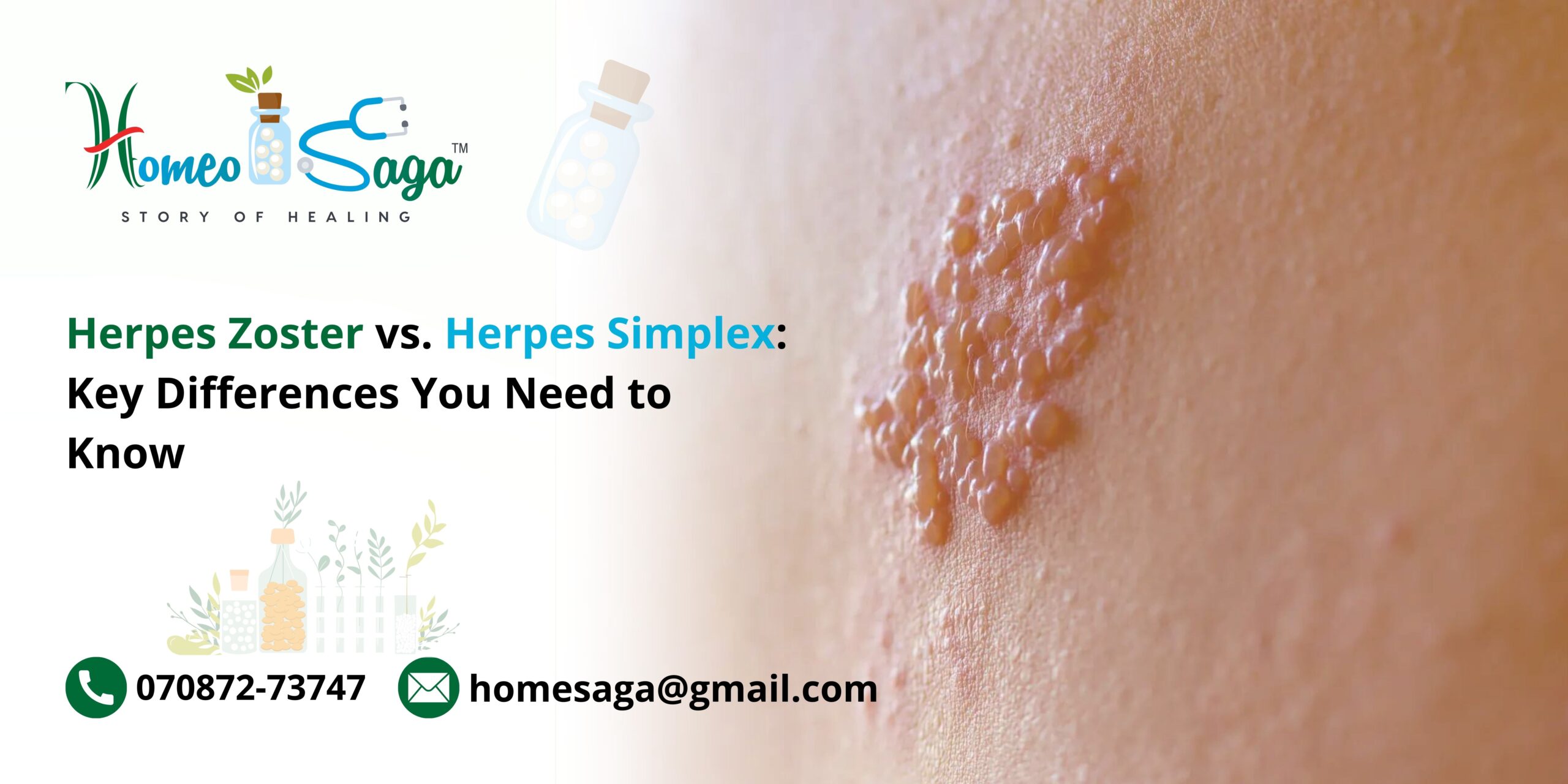When discussing viral infections, many people encounter the terms Herpes Zoster and Herpes Simplex. While both belong to the herpesvirus family, they are distinctly different in terms of their causes, symptoms, and treatments. This article will explore the key differences between Herpes Zoster and Herpes Simplex to enhance your understanding.
What is Herpes Zoster?
Herpes Zoster, commonly known as shingles, is a condition caused by the reactivation of the varicella-zoster virus (VZV), the same virus responsible for chickenpox. After recovering from chickenpox, the virus can remain dormant in the nervous system and may reactivate later, especially in older adults or those with weakened immune systems.
Symptoms of Herpes Zoster
Symptoms of Herpes Zoster generally include:
- Prodromal Phase: Before the rash appears, individuals may experience a burning or tingling sensation in a specific area.
- Rash Formation: A painful rash usually develops on one side of the body, featuring clusters of fluid-filled blisters.
- Systemic Symptoms: Fever, fatigue, and a general feeling of being unwell may accompany the rash.
The pain from Herpes Zoster can be severe and may continue even after the rash has healed, leading to postherpetic neuralgia.
What is Herpes Simplex?
Herpes Simplex is divided into two main types: Herpes Simplex Virus Type 1 (HSV-1) and Herpes Simplex Virus Type 2 (HSV-2). HSV-1 primarily causes oral herpes, resulting in cold sores, while HSV-2 is typically associated with genital herpes, leading to sores in the genital area.
Symptoms of Herpes Simplex
Symptoms can vary based on the virus type:
- For HSV-1:
- Cold sores or fever blisters around the mouth
- Painful lesions inside the mouth
- Swollen lymph nodes
- For HSV-2:
- Painful blisters in the genital area
- Itching or discomfort in the affected region
- Flu-like symptoms during the initial outbreak
Key Differences: Herpes Zoster vs. Herpes Simplex
To better understand how Herpes Zoster and Herpes Simplex differ, consider the following key distinctions:
- Causative Virus:
- Herpes Zoster is caused by the varicella-zoster virus, while Herpes Simplex is caused by either HSV-1 or HSV-2.
- Symptoms and Locations:
- Herpes Zoster typically manifests as a unilateral, painful rash on one side of the body, whereas Herpes Simplex presents as sores that can appear on the lips (HSV-1) or in the genital area (HSV-2).
- Nature of Infection:
- Herpes Zoster results from the reactivation of VZV after a previous chickenpox infection. Herpes Simplex can be either a primary infection or a recurrent outbreak.
- Transmission Methods:
- Herpes Zoster can be contagious and may spread the varicella-zoster virus to those who have not had chickenpox. Herpes Simplex is primarily transmitted through direct contact with active sores.
- Treatment Options:
- Antiviral medications, such as acyclovir, are commonly used for Herpes Zoster to relieve symptoms. For Herpes Simplex, antiviral treatments aim to manage symptoms and reduce the frequency of outbreaks.
Prevention Strategies
Preventing both Herpes Zoster and Herpes Simplex is crucial. The shingles vaccine effectively lowers the risk of developing Herpes Zoster, particularly for older adults. To minimize the risk of Herpes Simplex, practicing safe sex, avoiding direct contact with sores, and maintaining good hygiene are essential steps.
Conclusion
In summary, while Herpes Zoster and Herpes Simplex are both part of the herpesvirus family, they differ significantly in terms of their causes, symptoms, and treatment options. Understanding these differences can help individuals make informed decisions about their health.
As you learn more about Herpes Zoster vs. Herpes Simplex, remember that consulting a healthcare provider is key if you suspect you have either condition. Knowledge is essential for managing your health effectively and confidently.










